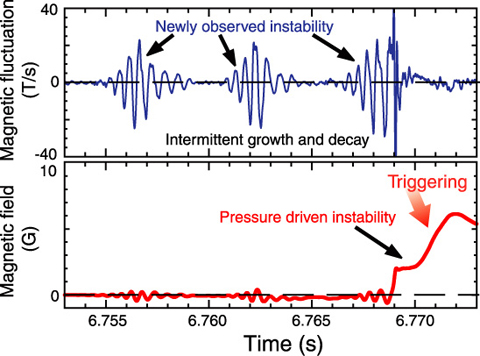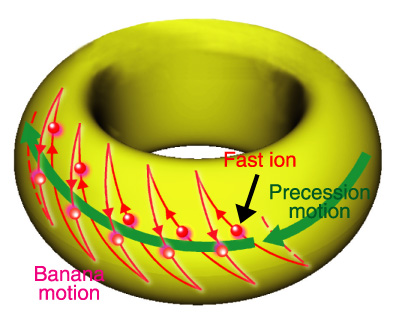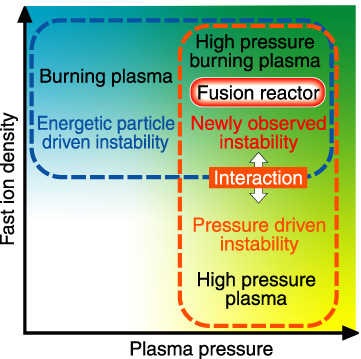
Fig.3-18

Fig.3-19

Fig.3-20
With an economically attractive fusion reactor, high fusion output should be achieved. Since the fusion output is proportional to the square of plasma pressure (= temperature times density), operations with plasma pressure as high as possible are required. However, in magnetic confined plasma, there is an upper limit to plasma pressure called the pressure limit. When the plasma pressure reaches the pressure limit, the plasma is distorted and plasma confinement is degraded. Plasma distortion driven by high pressure is called pressure-driven instability. On JT-60U, we have exploited and developed the operation region near the pressure limit while suppressing these instabilities.
Thus far, pressure-driven instability has been successfully stabilized by rotating the plasma on JT-60U. However, a sudden occurrence of pressure-driven instability has been observed despite there being sufficient plasma rotation. As shown in Fig.3-18, it was found that this phenomenon is associated with another new instability that intermittently grows and decays repeatedly with an oscillation of several kilohertz. According to detailed analyses, the new instability appears only in high pressure plasmas, and it is found that the instability is an energetic particle-driven instability, the driving source of which is energetic particles (fast ions) in the plasma. The motion of fast ions is schematically described in Fig.3-19. In the plasma, the fast ions go around the torus (precession motion) in a zigzag motion (banana motion). Because the frequency of the observed instability is close to the precession frequency of the fast ions, the new instability is thought to be driven by resonance with the precession motion of the fast ions.
The triggering of pressure-driven instability by the new instability, thus energetic particle-driven instability, is expected to be a serious problem in fusion burning plasmas at high pressure (Fig.3-20). At the same time, a beneficial interaction, such that the new instability could mitigate against energy loss due to the edge localized mode that intermittently appears in the peripheral region, has also been observed. This discovery of this new instability that is predicted to occur in fusion reactors is based on the realization of high pressure plasma on JT-60, and is a world-leading result.